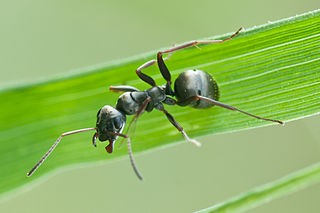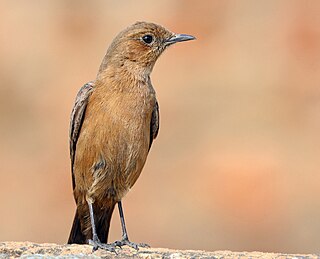Related Research Articles

The white-throated kingfisher also known as the white-breasted kingfisher is a tree kingfisher, widely distributed in Asia from the Sinai east through the Indian subcontinent to the Philippines. This kingfisher is a resident over much of its range, although some populations may make short distance movements. It can often be found well away from water where it feeds on a wide range of prey that includes small reptiles, amphibians, crabs, small rodents and even birds. During the breeding season they call loudly in the mornings from prominent perches including the tops of buildings in urban areas or on wires.

Nepenthes fusca, or the dusky pitcher-plant, is a tropical pitcher plant endemic to Borneo. It is found throughout a wide altitudinal range and is almost always epiphytic in nature, primarily growing in mossy forest.

Volkswagen do Brasil Ltda. is a subsidiary arm of Volkswagen Group, established in 1953 with local assembly of the Volkswagen Type 1 from parts imported from Germany. It produced over 20 million vehicles in Brazil, having been market leader for the majority of their more than sixty years in existence. Beginning in 1958, the Type 1 ("Fuscas") had a 24-year run as the number one in sales in Brazil. From 1987 until 2012, the Gol has been in first place in sales for 26 years straight.

Nepenthes vogelii is a tropical pitcher plant endemic to Borneo. It is thought to be most closely related to N. fusca.

Formica fusca is a black-colored ant commonly found throughout Europe as well as parts of Southern Asia and Africa. The range within the palaearctic region extends from Portugal in the west to Japan in the east and from Italy in the south to Fennoscandia in the north. Populations from North America have been split off as a separate species, Formica subaenescens. F. fusca nests are usually found in rotten tree stumps or under stones in clearcut areas and along woodland borders and hedgerows.

Aplonis is a genus of starlings. These are essentially island species of Indonesia and Oceania, although some species' ranges extend to the Malay Peninsula, southern Vietnam and northeastern Queensland. The typical adult Aplonis starling is fairly uniformly plumaged in black, brown or dark green, sometimes with a metallic gloss. The eye ring is often distinctively coloured. Immatures of several species have dark streaked pale underparts.

Nothofagus fusca, commonly known as red beech is a species of southern beech, endemic to New Zealand, where it occurs on both the North Island and South Island. Generally it is found on lower hills and inland valley floors where soil is fertile and well drained. In New Zealand the species is called Fuscospora fusca.
The Tasman starling was described in 1836 by John Gould as a species which occurred on both Norfolk Island and Lord Howe Island. In 1928 Australian ornithologist Gregory Mathews recognized that the plumage of the race from Lord Howe Island was much browner and more greyish than the plumage of the Norfolk Island race and split the species into two forms, the Norfolk starling, and the Lord Howe starling. Both subspecies are now extinct, thus so the species.

The brown rock chat or Indian chat, is a bird species of the family Muscicapidae. It is found mainly in northern and central India. It is often found on old buildings and rocky areas. It resembles a female Indian robin but lacks the reddish vent and differs in posture and behaviour apart from being larger. In flight it bears some resemblance to thrushes and redstarts. It feeds on insects, captured mainly on the ground. It was formerly placed as the sole species in the genus Cercomela but is now included with the wheatears in the genus Oenanthe.

Erythrina fusca is a species of flowering tree in the legume family, Fabaceae. It is known by many common names, including purple coraltree, gallito, bois immortelle, bucayo, and the more ambiguous "bucare" and "coral bean". E. fusca has the widest distribution of any Erythrina species; it is the only one found in both the New and Old World. It grows on coasts and along rivers in tropical Asia, Oceania, the Mascarene Islands, Madagascar, Africa, and the Neotropics.

Chaperina is a genus of frogs in the family Microhylidae. It is the only genus in the subfamily Chaperininae. It is also itself monotypic, being represented by the single species, Chaperina fusca, commonly known as the brown thorny frog, spiny-heeled froglet, and saffron-bellied frog. It is found on the Malay Peninsula, in Borneo and in the Philippines. It is abundant in Borneo but uncommon on the Malay Peninsula and patchily distributed in the Philippines.

Malus fusca, with the common names Oregon crabapple and Pacific crabapple, is a North American species of crabapple.

Ophrys fusca, commonly known as the sombre bee-orchid or the dark bee-orchid, is a species of orchid native to the Mediterranean from southwestern Europe and northern Africa to western Asia. Most subspecies of the Ophrys fusca are pollinated by males of Andrena bees.

Leptochloa is a widespread genus of Asian, African, Australian, and American plants in the grass family.
Nepenthes epiphytica is a tropical pitcher plant known only from the Berau and East Kutai Regencies of East Kalimantan, Borneo, where it grows at an elevation of around 1000 m above sea level. Prior to its formal description as a species, N. epiphytica was considered to be a variant of the closely related N. fusca. Nepenthes epiphytica belongs to the loosely defined "N. maxima complex", which also includes, among other species, N. boschiana, N. chaniana, N. eymae, N. faizaliana, N. fusca, N. klossii, N. maxima, N. platychila, N. stenophylla, and N. vogelii.

Pterolophia is a genus of longhorn beetles of the subfamily Lamiinae, containing the following species:
Pterolophia instabilis is a species of beetle in the family Cerambycidae. It was described by Per Olof Christopher Aurivillius in 1922. It is known from Seychelles.
Pterolophia guineensis is a species of beetle in the family Cerambycidae. It was described by James Thomson in 1864, originally under the genus Alyattes.

Diplachne fusca, called spangle top, is a widespread species of grass in the genus Diplachne, native to North America, the Caribbean, South America, Africa, Asia, and Australia, and introduced in Europe, New Zealand and Hawaii, among other places. It prefers to live in salty, wet conditions, such as in salt marshes and shallow depressions.
References
- ↑ BioLib.cz - Pterolophia fusca. Retrieved on 8 September 2014.